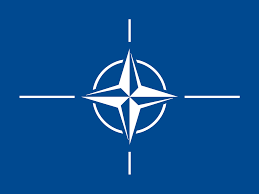
The United States Army is setting a critical milestone for its aviation modernization efforts, with plans to hold a competitive demonstration in 2026 for a new class of “ultra long-range” Launched Effects (LE). This initiative represents a significant strategic pivot, aiming to develop uncrewed aerial systems (UAS) capable of penetrating deep into contested environments from standoff distances, thereby extending the reach, lethality, and survivability of the Army’s future aviation fleet. The demonstration will serve as a crucial proving ground for industry contenders and will shape the future architecture of the Army’s reconnaissance, surveillance, and strike capabilities in an era of renewed great power competition.
This move is not merely an incremental technological step but a doctrinal evolution. Launched Effects are a cornerstone of the Army’s Future Vertical Lift (FVL) ecosystem, envisioned as a family of air-launched drones designed to operate as sensors, decoys, electronic warfare platforms, and kinetic strike assets. By pushing the range requirement into the “ultra long-range” category, the Army is signaling its intent to field systems that can influence the battlefield at operational and even strategic depths, a capability traditionally reserved for Air Force or Navy assets. This aligns directly with the service’s overarching Multi-Domain Operations (MDO) concept, which requires the ability to project power across vast distances, particularly in theaters like the Indo-Pacific.
Historical Context: The Evolution of Launched Effects
The concept of Launched Effects has been integral to the Army’s modernization strategy for nearly a decade, emerging from the need to equip its next-generation rotorcraft with organic, expendable, and attritable systems. The initial vision categorized LEs into short, medium, and long-range variants, each tailored for different tactical scenarios. These systems are designed to be launched from platforms like the Future Long-Range Assault Aircraft (FLRAA) and the now-defunct Future Attack Reconnaissance Aircraft (FARA), allowing crewed helicopters to remain outside the lethal range of advanced enemy air defense systems. The cancellation of the FARA program has, if anything, increased the urgency for robust, long-range uncrewed reconnaissance and attack capabilities that LEs can provide.
The push towards an “ultra long-range” capability reflects lessons learned from observing recent global conflicts, where UAS have proven decisive. It also addresses the specific challenges posed by near-peer adversaries who have invested heavily in sophisticated Anti-Access/Area Denial (A2/AD) networks. A system that can travel hundreds of kilometers after launch provides commanders with persistent ISR (Intelligence, Surveillance, and Reconnaissance) and precision strike options against high-value targets deep behind enemy lines without risking high-value aviation assets and their crews.
Strategic Implications for Multi-Domain Operations
The development of ultra long-range LEs is a direct enabler of the Army’s MDO doctrine. These systems are envisioned as key tools for the initial phases of a conflict, tasked with penetrating and disintegrating an adversary’s integrated air defense system (IADS). By deploying a mix of LEs for electronic attack, reconnaissance, and kinetic strikes, the Army can create temporary corridors for crewed aircraft and long-range precision fires to exploit. This layered, multi-domain approach is essential for overcoming the defensive advantages of a peer competitor.
Economically and strategically, these systems offer a cost-effective means of imposing high costs on an adversary. As attritable or expendable assets, they can be risked in ways that multi-million-dollar crewed aircraft cannot. This changes the risk calculus for commanders and allows for more aggressive operational concepts. For the Indo-Pacific, where vast maritime and terrestrial distances are the defining feature of the battlespace, ultra long-range LEs provide a tangible solution to the tyranny of distance, enabling Army aviation to remain relevant and potent from dispersed land bases.
Key Actors and Industry Competition
The primary stakeholder within the military is the U.S. Army’s Program Executive Office (PEO) for Aviation, working in concert with the Future Vertical Lift Cross-Functional Team. These organizations are responsible for defining the requirements and overseeing the development and acquisition process. The 2026 demonstration is designed to foster intense competition among defense industry prime contractors and specialized technology firms.
Analysts expect major industry players such as Lockheed Martin, Raytheon (RTX), Northrop Grumman, and General Atomics Aeronautical Systems to be key contenders, leveraging their extensive experience in UAS, missile technology, and systems integration. However, the competition is also likely to attract innovative, non-traditional defense companies that specialize in autonomy, artificial intelligence, and advanced drone manufacturing. The demonstration will assess not only the range and payload capabilities of the proposed systems but also their autonomy, resilience to electronic warfare, and ability to network and collaborate as part of a larger system-of-systems.
Future Scenarios and Programmatic Hurdles
A successful 2026 demonstration could rapidly accelerate the ultra long-range LE concept from a developmental effort into a formal Program of Record, with significant funding allocated for engineering, manufacturing, and development (EMD) and eventual procurement. The chosen system or systems would become a foundational capability for the Army’s aviation brigades by the next decade. This would fundamentally enhance the Army’s ability to conduct independent deep-area operations and contribute more effectively to the joint force.
However, significant technical and programmatic challenges remain. Achieving “ultra long-range” performance requires breakthroughs in propulsion efficiency, miniaturization of sensors and warheads, and the development of secure, low-probability-of-intercept communication links that can function over extended distances in a contested electromagnetic spectrum. Furthermore, the program will have to compete for funding within a constrained defense budget. Integrating these advanced LEs seamlessly into the command-and-control architecture of both current and future Army platforms will be a complex undertaking, requiring open-architecture standards and robust software development.
In conclusion, the Army’s planned 2026 demonstration for ultra long-range Launched Effects is more than a simple technology showcase; it is a pivotal event that will define the future of Army aviation. By pursuing this capability, the service is taking a bold step to ensure its relevance and lethality on the future battlefield. The outcome of this competition will not only determine which companies will build the Army’s next generation of aerial drones but will also shape how the U.S. military projects power and counters peer adversaries for decades to come.
Source


